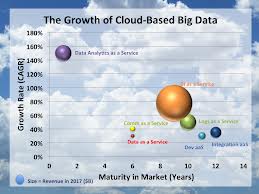Sunil Lalvani| Reuters
The Sixties witnessed the world’s first major technology wave with the rise of the mainframe, which had a dramatic impact on business processes and continues to do so even now. The second wave was the rise of the mini-computer, which had ease of use and was affordable. The third has been the PC, which needs no introduction, and the Internet is the fourth.
The Internet has changed the way business is conducted across the world and has had an impact on how we work, shop, socialise and interact. And now smart mobile technology really does look set to be the fifth major technology wave. What is of even greater interest is that we may be looking at a technology growing faster than any other in history. It took landlines nearly 100 years to reach saturation. Mobile technology reached saturation within 20 years and smartphones are set to do so in less than 10.
Today, technology has moved much ahead, with a requirement to be much smarter than its predecessor. Smart technology is targeted at understanding our smallest of needs, to make products and devices more user-friendly and one that could adapt to human needs.
Smart technology adapts to human behaviour, moulds itself to provide a more personalized environment and automates some tasks to ease our lives. Newer, more evolved features such as gesture recognition, enhanced connectivity, data synchronization through cloud, near field communication, wireless and solar charging facilities are redefining smartphones. Sleek designs are making devices even more attractive.
Gesture recognition is a technology that has the potential to change the way users interact with their device. It is perhaps the natural evolution of intuitive user interfaces. Gestures allow users to perform specific tasks in an extremely efficient and dynamic manner. Some of the most used are swipe to unlock, pinch to zoom and pull to refresh. While those are relatively basic, gestures have evolved greatly. Third party developers have begun to truly utilize the potential that multi-touch displays hold. In fact, technology has paved the way for touch-free gesturing that has been deployed on smartphones lately, such as ‘Air View’ and ‘Air Gesturing’. This allows users to access information on the smartphones without actually touching the device.
Up next is enhanced connectivity, which is set to become a regular feature in smartphones. Companies are already embracing the consumer’s smartphone-connected lifestyle with the broadest range of car, home and electronic products that offer multiple wired and wireless options with today’s devices. Multiple channels allow consumers to share content from their devices whether it’s at home, in the car, or on the go.
Sharing content will also be facilitated by near field communication (NFC), where one can transfer information between a phone and other devices such as phones, NFC tags or payment devices. For example, you can share web addresses, contacts, phone numbers, music tracks, videos or photos. NFC is activated by bringing two such devices together. NFC tags are small programmed information areas that can be embedded on posters, on billboard advertisements or next to products in retail stores. Touching a tag can give you additional information such as maps, web addresses and movie trailers. Currently, Bluetooth and Wi-Fi are the primary platforms enterprises use to transmit proximity marketing messages.
Till now, mobile applications have been storing all the data on the device itself and not in the Cloud. Going forward, however, cloud computing and smartphone technologies will evolve into a mobile Cloud, with mobile-specific infrastructure, storage, security and compliance and applications among other things. As users spend less time on PCs and notebooks and more on smartphones and tablets to access information and perform work-related functions, it is crucial for Cloud service vendors to deliver functionalities compatible with a number of different devices.
The quantum leaps in smartphone technology have given birth to concepts such as augmented reality, seamless voice control, in-built projectors, 3-D screens and holograms. Pack all these features into sleek feather-light handsets with flexi screens and wireless or solar chargers and you have the next gen smartphone, but only till the next leap. Everyone is waiting to see what the smartphone industry can offer, and how the masses will react to the emergence of new and better smartphones along with the multitude of issues that come with each new technology.













